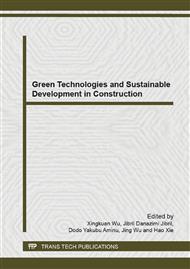p.307
p.312
p.316
p.320
p.323
p.329
p.333
p.337
p.342
Human Perception Relation between Thermal Comfort and Air Movement for Ceiling Mounted Personalized Ventilation System
Abstract:
As one kind of newly developed personalized ventilation (PV) system, the relation was explored between thermal comfort and air movement perception/acceptability/preference with tropical subjects, who had become passively acclimatized to hot conditions in the course of their day-to-day life. The tests were conducted in field environmental chamber (FEC) of National University of Singapore. 32 subjects (16 males and 16 females), performed normal office work, can choose to expose to four different PV airflow rates (4, 8, 12, 16 L/s) so as to simulating individual control. Ambient temperatures of 26°C and 23.5 °C and PV air temperatures of 26 °C, 23.5 °C and 21 °C were utilized to conduct parametric variation studies. Each combination was maintained for 15 minutes during which the subjects responded to computer-administered questionnaires. Under different PV airflow rates and ambient/PV temperature combinations, the relation between thermal comfort and air movement perception/acceptability/preference was analyzed.
Info:
Periodical:
Pages:
329-332
Citation:
Online since:
May 2014
Authors:
Price:
Сopyright:
© 2014 Trans Tech Publications Ltd. All Rights Reserved
Share:
Citation:


